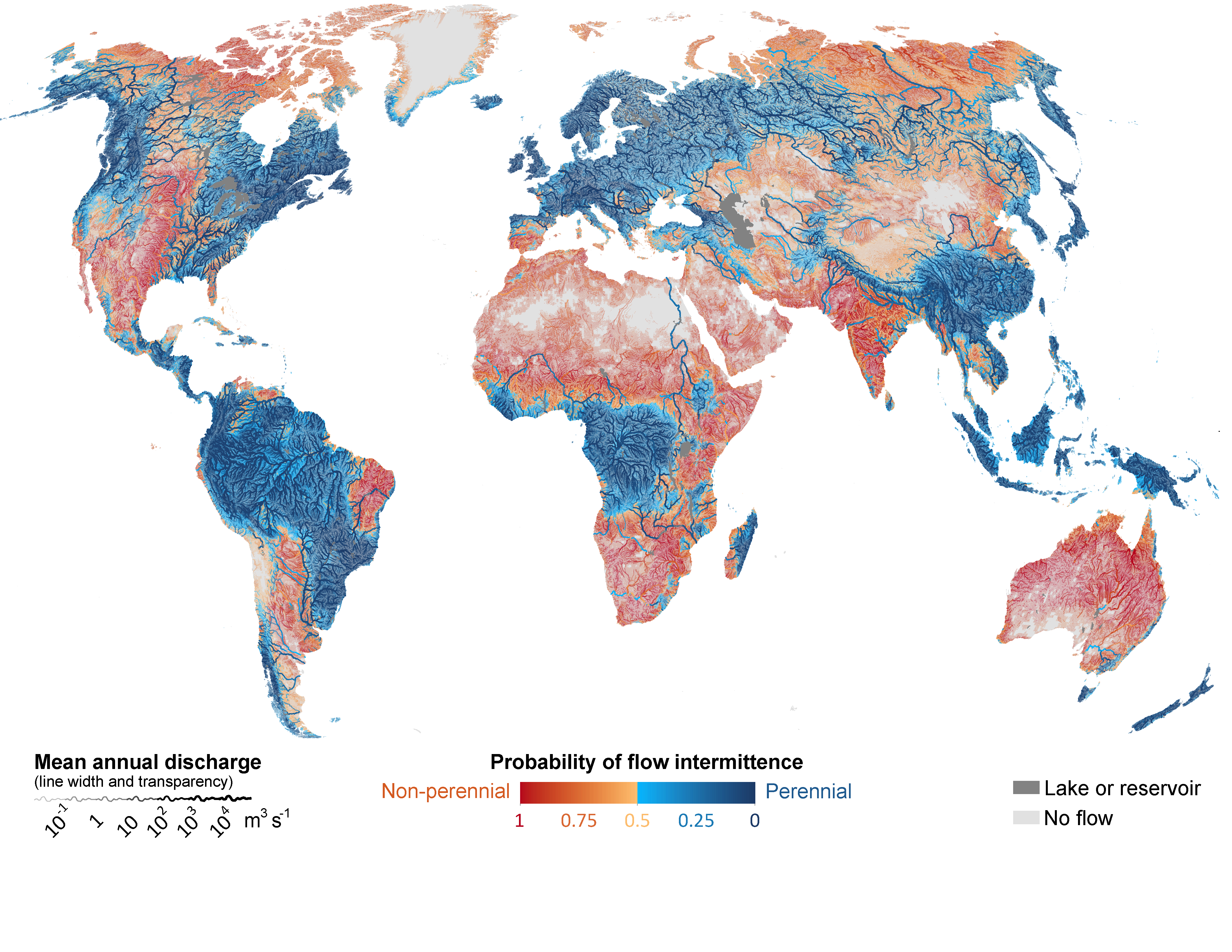Biodiversity Reading time 3 min
More than half of the world’s rivers are non-perennial: researchers mapped them for the first time
Published on 21 June 2021
Rivers and streams are essential for biodiversity, biogeochemical cycles, and human societies. INRAE and McGill University researchers showed that more than half of the 64 million kilometres of rivers and streams that they investigated stop flowing at least one day per year on average. Unlike perennial rivers and streams, whose importance is well recognised, the value and fate of those watercourses that periodically stop flowing tend to be overlooked or ignored.

Messager et al. 2021
Unique and valuable ecosystems in all climates and on all continents
Non-perennial rivers and streams are home to a unique diversity of organisms, with many species having adapted to the cyclical absence of water. These ecosystems also play an important role in controlling water quality and are the primary sources of water, food, and livelihood for millions of people.
Drawing on climatic, hydrological, geological, and land use data on the world’s river system, this study highlights the presence of non-perennial rivers in all climates and biomes[1] across all continents. Based on preliminary estimates, the study also suggests that more than half the world’s population lives in places where the nearest river periodically runs dry.
Many rivers that were once perennial have become intermittent over the past 50 years, including sections of major rivers such as the Nile and Colorado. Due to continued climate change, shifts in land use, and water withdrawal for various uses (agriculture, drinking water, industry and energy, etc.), an increasing proportion of the world’s river system is expected to cease flowing seasonally in the coming decades.
Few studies and inadequate management
Non-perennial rivers and streams are often inadequately managed or even excluded from management activities and conservation laws because they are overlooked. This neglect frequently leads to their degradation due to overpumping, pollution, and overfishing.
Until recently, freshwater science has tended to focus on the functioning and conservation of perennial bodies of water. Scientists are only now becoming aware of the importance and rapid degradation of intermittent rivers. As a result, scientific methods, management tools and protocols for monitoring the health of these rivers and streams are still limited or non-existent.
This study’s findings call for an update of the fundamental concepts of river science and management, that traditionally assume year-round water flow in rivers and streams, to improve our understanding and management of terrestrial rivers and streams, their biodiversity, and their functional integrity.
By extrapolating the rate of water flow recorded by gauging stations in more than 5,600 rivers around the world, the researchers were able to draw up the first map of non-perennial rivers and streams in the world. This map provides essential baseline information for tracking future changes in flow and for determining and monitoring the roles of these rivers and streams in maintaining global biodiversity as well as water and biochemical cycles.
[1] Biome: a set of ecosystems that characterise a biogeographical area.
|
Reference Messager, M.L., Lehner, B., Cockburn, C. et al. Global prevalence of non-perennial rivers and streams. Nature 594, 391–397 (2021). DOI: 10.1038/s41586-021-03565-5 |
